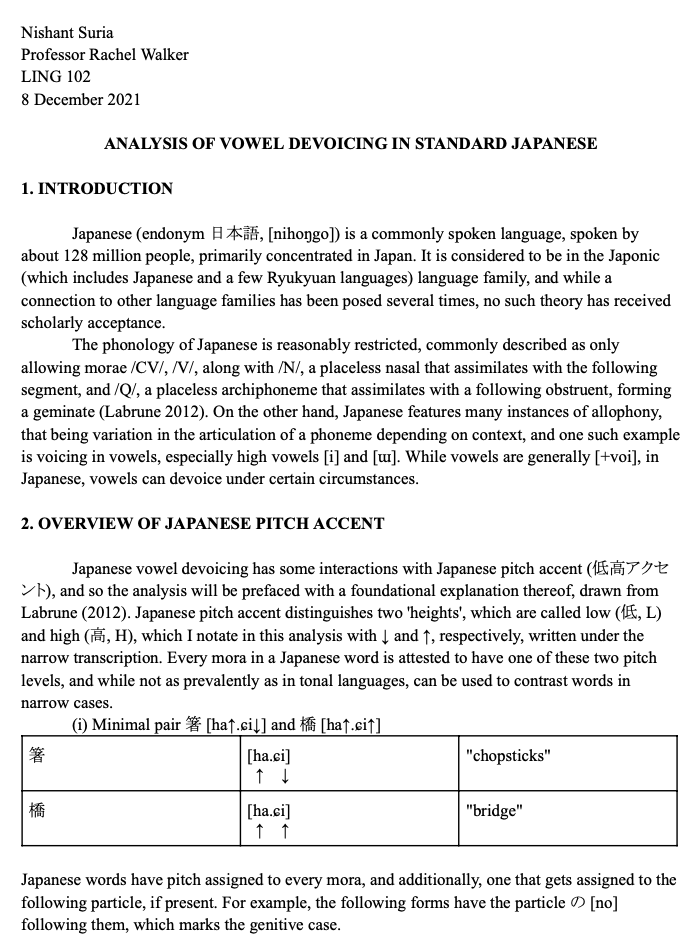For Phonology II (LING 102 @ UCSC) in Fall 2021, under Rachel Walker, I applied Optimality Theory to create a framework for summarizing the phonological basis for vowel devoicing in Japanese.
In Japanese, vowels /i/ and /ɯ/ can become voiceless, such as in the word 月 「つき」 /tsuki/ → [tsɯ̥ki]. Voicelessness in vowels seems to be invariably triggered by voiceless consonants adjacent, and in such well-understood cases, rule-based phonology is more than satisfactory to summarize it.
V -> [-voi] / [-voi] _ [-voi]
(vowels become voiceless when preceded by and followed by a voiceless segment.)However, in order to understand more complicated cases, such as 尽くす 「つくす」/tsɯkɯsɯ/ [t͡sɯ̥.kɯ.sɯ̥], rules such as the one above would have to be supplemented with increasing numbers of additional rules, to make sure that voiceless vowels are not overgenerated. In forms such as this one, pitch-accent becomes relavant, as the downstep mora of Japanese pitch contours don't tend to devoice even when they match the environments. It is in these cases, that Optimality Theory, which uses conditions rather than rules to find the best fit, is apt. The paper outlines the increasingly complex factors that may affect whether vowels appear devoiced, and how they fit into Optimality Theory conditions.
